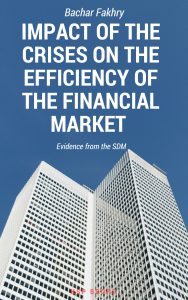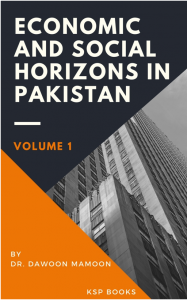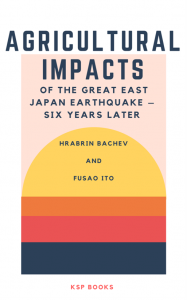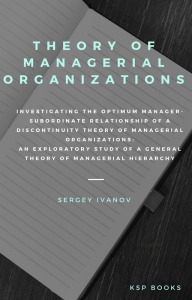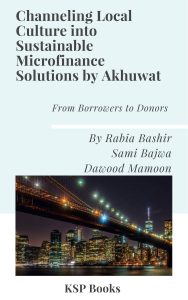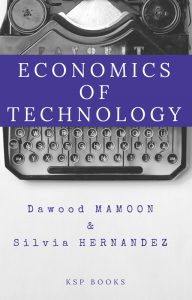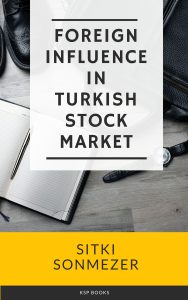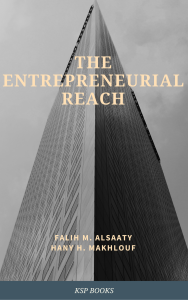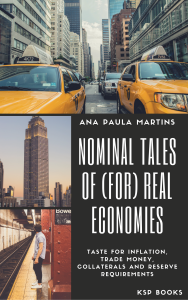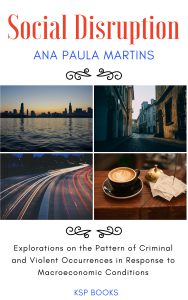Synopsis
In particular, the volume contains four chapters:
I. Overlapping of Papuanistiecs and Melanesianology
The boundary between Papua and Melanesia is a matter of doubt and uncertainty. To mention Papua is also Melanesia in it. Similarly to mention Melanesia also exist Papua in it. As Melanesia, Papua is a sense of pluralism because of the distinctive coloring of the inhabitants and ethnic groups as well as the domestic pattern in the Papua Land of Islands or Sub-Continental of New Guinea. There is a frame of doubt in which Papua is based on the islands or sub-continent of New Guinea. Melanesia is related to the islands of the Southwest Pacific, including New Guinea to the west, including the archipelago of Nusantara in this case Nusa Tenggara, Maluku and the Southern Philippines (Mindanau) which perhaps also Formosa, Thailand and Peninsula of Malaca. Although not perse true because when viewed from the perspective of linguistics take it in the region mentioned there is randomly developing languages belonging to Austronesian characteristiecs and Papuan Languages characteristiecs, which also spread over to Polynesia, Micronesia, Australia and perhaps Indonesia and New Zealand. So here’s where the base spans the boundaries of the doubt. Thus Papuanistic is used to concoct in Melanesia wilderness especially concerning Language Science or Linguistics where being Melanesianology intended specifically for the attachment of Anthropology Science. Though it is, does not really shorten the boundaries of the doubts about both performance, Melanesia and Papua. The discussion is meant to say, in Melanesia there is Papua on the one side while on the other side Papua is inheriting the distinction between the Melanesian Typical Austronesians scattered mingled with the Papuans in Melanesia. This is a working paper in Course of Social Science Theory at Advanced Study in Social Science Program Cenderawasih University Year 2014. Also as well as a continuation of my Dissertation at Cenderawasih University 2017 entitled “The Roadmap to the Revival of the Papuan Nation in West Papua: “A Peaceful Decision on the Restoration of the Self””, in particular Chapter 4.1 or in my Book parsed from my Dissertation under the title Recovery of Papua, Chapter II. The topics raised in this paper is the overlapping between the Study on Melanesia and the Study on Papua entitled: “Overlapping of Papuanistiecs and Melanesianology.” This article is exciting for works to continue in addition to being a reference for planners and policies actors towards the Papuan people in particular and generally Melanesia and other parts of Oceania (Polynesia and Micronesia) and even Autralia and Indonesia.
II. Federalism versus unitary, disharmony in Indonesia: Papua Melanesia as specific cause
Two sides of the conflicting spirits apparently did not continue to coalesce though continued to be forced. That of federalism and the freedom should be the opposite of a unitary and attachment or integration as very natural novae and nuance. Forcing the two elements of coercion in to one will only create a clash of mutually beneficial or can not more profitable than only of the domination party which not share evenly. Because naturally there are evenly spread of beneficial when there is freedom (federalism) rather than the unity of dominant party whom dominated that is the uses of the term “embrace” as a mere tool. The understanding of multi-races will not share evenly in Ties or Unification is because of different definitions. Then when did occur due to imposed then it will bring up the cohesive stretching so adhesive or attempts of unification is simply just a tighten performance and bland at the hearing as well as reasoning.
III. Prestige and powers of “the World Big Power”, Tanah Papua as specfic case
The chapter, Prestige and Powers of “The World of Big Power”, Tanah Papua as Specific Case, the author intends for Subtopic to two and at the same time can also to accommodate the third problem of formulation being raised in dissertation entitled: ” Re-Roadmap of the Papuan in State of Papua Courent West : “A Peacefull Solution Recovering of Identity”. That is by treading Returning Roadmap, referring to Unilateral Declaration of Independence/UDI of the Papua Nation and the Federal Republic of West Papua/NRFPB on October 19, 2011. The study describes in five main topics, namely, (1) Defining “Hidden Structure” in Melanesian-Papua Social Cultural highlighting Papuanistiecs and Melanesianology; (2) Prestige and Powers of “The World Big Power”, Tanah Papua as Specific Case, reveals how the influence of ”The Giant Powers” to the problem of Papua; (3) Federalism in Indonesia revealing Melanesian-Papua in Tanah Papua as Special Case versus the Unitary Republic of Indonesia; (4) Constitution vis-à-vis Constitution illustrates the philosophical correlation among Indonesian constitution 1945 versus Papua constitution 1999; (5) Unilateral Declaration/UDI of the Papua Nation and NRFPB on October 19, 2011. The background of the study is based on two keys of Meteray’s thoughts: First, Meteray (2012: 268, 2013: 4) confirmed that, during the 17 years from 1945 to 1962, the process to Indonesia-nizing the Papuans are generally still in the stage of seeding while growing only in some urban areas and the government center. Awareness to be Indonesian-ness was yet to reach all areas of Papua. Meteray added (2012: 264-267) that the presence of all Indonesia’s past greatly influenced the policies and the approach taken by both the Dutch and Indonesian government through the nationalists initiators role at that time. Second, study of LIPI in 2007 (Soewarsono, ed.) is still questions to the Indonesian-ness of Papuans reinforces the view of Meteray (2013: 1), which states that the process to Indonesian-ness among Papuans still weak. Meteray concluded that, in fact, to understand the history of Papua will become a basic reference for the government seek and find out the right way and dignified in overcoming the issues of Papua, though on the other hand Junus George Aditjondro, 1999 clamming, the Government and Important People of Indonesia has curled the history of Papua which by the Papuans wanting to be straightened out: “This is the dark history of Papua in Indonesian Historiography”. Thoughts of Meteray and Aditjondro strengthens the authors thought that the various problems occurred in Papua, especially the facts involves “Merdeka Papua”. Referring to the failure of Indonesia-nizing of the Papuans, it appears that it is not necessary regrettable because in fact, they are different by nature or in the growth process since in the hands of Dutch colonial control of the Dutch East Indies (for Papua 1826-1949-1962). Precisely when indecision of the President of Indonesia to the case of Papua was safe step into alternative measures of the Melanesian-Papua themselves must be hacked through, UDI of Papuan Nation and NRFPB on October 19, 2011. The research focuses on studies of literature and interviews by the method of Descriptive Analysis and to assemble the Hidden Structure and Correlation Studies to reflect the relationships between aspects on the basis of Motivation Theory, Theory of Conflict, Theory of Social Change and Theory of Balance and Theory of Realist implied through sub theories positioned as tools to characterize, recognize, and understanding as well as tools to analyze (dissect) the problems issues to be raised in this written work. In connection with this, the author is improving the nature of Hidden Structure as Grand Theory. Formulations of the problems might be: (1). How to understand the present of the Melanesian-Papua in Tanah Papua? (2). May the existence of Papua to be returning to the attention of Prestige and Powers of “The World Big Power” for its political status to be reviewed at the UN? (4).Whether, the Melanesian-Papua and the Indonesian in Tanah Papua can together according to the federalist order of Melanesian-Papua? (4). Haw is the condition of Indonesian society and customs of Melanesian-Papua can be brought together to create a bilateral solidarity for the multilateral-beneficial and usefulness?
IV. Papua versus Indonesia: AUT VIAM INVENIAM AUT FACIAM. It is either to find or make way
Papua versus Indonesia, “It is either to find or make way” is a frase in the Latin to be expressed “Aut viam inveniam aut faciam”. Suggesting of unfamiliar action taken to move for change, said: Transform. Due to, I had complete a dissertation entitled: Re-Roadmap of The Papuan in State of Papua Courant West: “A Peaceful Solution Recovering of Identity”, sounding the Indonesia and Papua, in connection with the integration within NKRI, the two nations are victims of history of International conspiracy. Both nations therefor to move from backwarded concept into transform concept. Thought which this paper is derived from three main reasons: First, the authors understand, the Papuans within NKRI faced with a dead end so that there no totally self-express in the system and pattern built by Indonesia which in fact is very curbing the channel of democracy in form of dialogue and rights opinion. Second, Papua under Indonesian government as a territory of non-self-governing nation or region and nation under the guardianship of Indonesia as a member state of the UN remain under spotlight. Third, Papua and Indonesia are culturally different, so necessary appreciation over the potentially manageable distinction being a force for dignity. Precisely thus, the Papuans have hacked UDI and FRWP. The purpose is academic and practical. Academic aim is apply the theory of Hidden Structure as grand theory and theory of Structuralism as middle theory with convergent theory of Social Conflict, analyzing the present of Papuan Nation in State of Papua Courent West as an integral part of NKRI, become world’s issue by looking at fact of political effort of Papua Nation. The practical is understanding Papuans and Indonesians in Papua. In order to create a peaceful and prosperous life, mutual respect among fellow citizens in the State of Papua Courant West, put forward dignity and human rights, tolerance and solidarity, to create sincere judgment, worth highlighting right or wrong is my country and also right is right-wrong is not right. Methodology is “historical and archival” linked to current conditions in Papua from cultural and political side. In addition, it is combined with auto-ethnography method using the researcher’s personal experience (reflexivity) to explain and criticize cultural phenomena, practices, and experiences by showing the process of the observed society doing their life. The study reveals from this perspective that the Government of Indonesia in its position as a Member State of the UN and the organizer of duties as the UN Trusteeship of Papua apparently is completely unaware. By looking at the socio-political context that developed in Papua, various attempts were made to find a solution to the problem of integration, one of which is offer by the authors that is Transformation by Synchronization RI 1945 Constitution and Panca Sila with the FRWP Constitution 1999 and Triple Fold Logics of Papua-Melanesia through internasional manner.
Contents
About Author
ISBN
978-605-7736-58-1
Date of Publication
December 15, 2019
File Size: 4379 KB
Length: xii + 210 pages
This work is licensed under a Creative Commons Attribution 4.0 International License.


